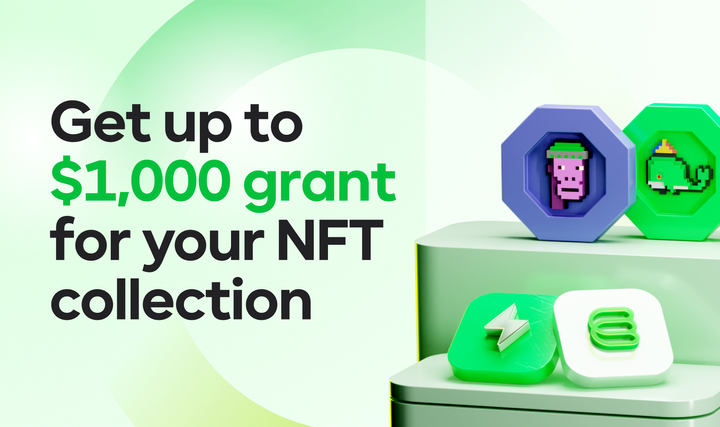Is 1000% yield really high?
To successfully invest in cryptocurrency, factors beyond yield potential are important to consider, such as technology, team experience, and token economy. Staking yield is only one factor when decentralization, regulation, and community engagement are also crucial.

Blockchain and cryptocurrency technology disrupted traditional finance in the last decade. A completely new economic sector has been created since Bitcoin's inception, encompassing entirely new professions no one thought of and a hundred thousand workplaces.
Decentralized finance is a great example with plenty of new solutions including DeFi loans, staking pools, Real World Assets tokenization (RWA), and institutional DeFi. However, this industry is still diminished or feared by institutions and investors, retail or professional. Cryptocurrency has been a hot topic in the financial world over the past years, and one of the most intriguing aspects of digital assets is the high yields they offer.
TradFi vs Crypto
As the article's title implies, we will focus on crypto yields available in the sector and whether triple or more-digit gains immediately suggest high-risk investments. So, is a 1000% yield that high? The first thing we need to consider is the timeframe. Every emerging market, in this case, blockchain-based projects (including DeFi protocols, tokenized Real World Assets, staking marketplaces, and more) displays increased volatility. It is the cost of innovation and adoption.
As the market matures, the valuation changes decrease in amplitude. The same will happen with the crypto sector as more and more enterprises, institutions, and individuals utilize distributed ledger technology. Let's take Bitcoin as an example, the original and most popular blockchain and its underlying medium of exchange - BTC. Its first implementation was recorded in 2009. It has been gaining in the number of users and value since then. Bitcoin is regarded as the safest cryptocurrency investment option currently. It achieved this reputation with time and various trials it faced. Nevertheless, BTC is still considered a risky investment in comparison to stocks.

Bitcoin's ingenious peer-to-peer network and potential attract people who wish to build on it and, without pretending otherwise, profit from it. The compound annual growth rate (CAGR) for BTC, which is the rate of return (RoR) for investment from its beginning balance to its ending balance in the established period, is equal to 238.5%. The starting price is $0.003 from March 2010 and the first BTC exchange. The end value, at the time of writing, is $23,000. The calculation period spans 13 years. Presented CAGR shows Bitcoin as a lucrative long-term investment. In the meantime, investors had to navigate through cycles, bear and bull markets, black swan events, and market overheating phases. In retrospect, was Bitcoin a risky investment? Time plays a massive role here, definitely. However, putting timing the market aside, BTC offers a state-of-the-art solution for a decentralized payment system, without intermediaries, accessible to anyone with an internet connection. Fundamentally, Bitcoin introduces revolutionary technology, and high yields are just an outcome of the progressing adoption.
A high yield in traditional finance and global money markets typically refers to returns of 7% to 10% or more, which is considered attractive to investors. Returns in crypto, on the other hand, are significantly higher and can seem too good to be true. What crypto is broadly associated with are high-risk, high-reward ventures. Everyone knows stories of great wealth being built and massive losses being taken. Interestingly enough, we hear about extreme situations only neglecting measured and risk-aware investment possibilities. This does not apply only and exclusively to blockchain and cryptocurrency. Although less volatile, traditional finance (TradFi) and global money markets also witnessed success and failure. Promises of fast and high returns emerge in both worlds. The crypto industry includes more such situations being less regulated. Nevertheless, it should not undermine the share of groundbreaking technology and innovative projects such as decentralized finance yield protocols, liquid staking, and crypto loans.
For example, equities are typically considered low-risk investments that offer modest returns over the long term. The company's performance, technology, financials, and assets determine the value of stocks. It does not mean they are not subjected to speculation, just like cryptocurrencies but to a lesser degree.
On the other hand, businesses and projects utilizing blockchain operate in a decentralized market that is not regulated by any central authority (apart from CeFi). This means that the value of a cryptocurrency is influenced by demand and supply, which can be highly volatile. However, this volatility can also lead to tremendous gains for investors willing to take the risk, measured and calculated or not. Cryptocurrency has a history of delivering substantial returns to those who invest at the right time, and 100%+ yields are not uncommon in the crypto world.
The year 2022 did not spare the majority of investors, regardless of the positions in their portfolios. In this period, Bitcoin's price declined by 65%. For reference, let's analyze the performance of a few tech stocks traded on the Nasdaq. Some of the largest companies, such as Tesla, Meta, Amazon, and Google, experienced significant losses. Tesla stocks lost around 73% of their value in 2022, Meta suffered a 64% loss, Amazon experienced a drop of circa 50%, and Google stock price declined 38%. These losses demonstrate that even in regulated financial markets, people can face massive losses in their investments. Negative yields should not discourage investors with well-thought-out strategies and longer time horizons. The amplitude and violence of price movements can intimidate investors starting in the crypto market. The TradFi markets also witnessed unbelievable returns. The time and growth tempo are just different.
When considering the same stocks mentioned above: Tesla, Meta, Amazon, and Google, and verifying their price action in the last decade, we arrive at the following results. Tesla can show off a yield that overshadows many cryptocurrencies with the maximum possible return, over the last decade, of around 15,500%. Meta could have generated a yield of 1280%, Amazon 1365%, and Google 685%. The possible profits are noticeable, and their levels are no different from the cryptocurrencies' results. The past yield and valuations should not decide on assets' creditability and riskiness.
Staking
While yield potential or previous performance is an influential factor for investors, other components determine the successful investment. These include the technology behind the blockchain or the cryptocurrency, the experience and dedication of the team behind the project, and the sustainability of the token economy. For example, a cryptocurrency with underlying solid technology, a committed and experienced team, and thoughtful token characteristics is more likely to deliver long-term returns, regardless of the crypto yield or staking rewards. DeFi best describes ongoing experiments - liquid staking, permissioned DeFi, decentralized marketplaces, lending, and borrowing.

Proof-of-stake blockchains have become immensely popular in the crypto world. Securing the network through locking coins or tokens has become an increasingly attractive way to earn passive income. Although, liquid staking derivatives replace permanent locking. With crypto yields ranging from 2% to 100% or more, the question arises as to whether this is sustainable and what it means for the stability of the project. The staking process consists of holding a cryptocurrency in a hot or cold wallet and participating in the network's consensus mechanism. In exchange for providing security to the network, staking participants are remunerated with new coins. The rewards from staking vary depending on the cryptocurrency, but many offer premiums over 100%. While crypto yield may seem high, it is crucial to understand that it does not necessarily mean higher risk. Especially when institutional and permissioned DeFi is getting more and more popular.
The stability of a cryptocurrency is dictated by the demand for the asset and the supply of new coins entering the market. If demand for a cryptocurrency is high, it can overcome the effects of inflation caused by staking rewards. It is highly recommended to get acquainted with project economy details and familiarize yourself with the token release schedule and emissions, token distribution, revenue streams, and reward mechanisms. A strong token economy is crucial for the long-term success of a cryptocurrency. Look for projects with a clear use case and a well-designed token economy that incentivizes both users and holders.
The scenario where a cryptocurrency has high demand but also high inflation due to excessive staking rewards happens quite frequently. In this situation, the value of the cryptocurrency may still rise as demand outpaces the increase in supply. Investors who bought the cryptocurrency early may still realize substantial gains, even with a diluted token supply due to inflation. Events like this happen regularly in bull markets when speculation, trends, and narratives take over investors' judgment.
Staking yield is one factor many others determine whether the project and rewards are sustainable. Security should be the first aspect people verify. Not everyone is a blockchain developer and has extensive knowledge of smart contracts. Despite that, individuals can use common sense and a bit of skepticism when engaging with a crypto project. Things worth checking out include simple team verification with e.g., LinkedIn (if not anonymous), jumping on Discord or Telegram channels to inspect the community, or utilizing more advanced skills such as exploring token addresses on Etherscan. Tools like Token Sniffer or Honeypot Detector are great resources for non-technical DeFi participants to analyze smart contract basics. Every market participant should recognize the type of product. Is that centralized finance staking (CeFi), DeFi pools, or custodial or non-custodial staking?
When it comes to staking cryptocurrencies, there are several factors that individuals should consider beyond just the staking yield. Apart from the security of a protocol and token economy covered above, people should additionally focus on decentralization. It is a fundamental feature of blockchain technology. Projects to look for ought to be based on multiple validators and widespread node networks to minimize the risk of a single point of failure.
The next factor is not mentioned often, but as the crypto sector matures, it might play a substantial role, and that is regulation. Countries have different requirements and regulations regarding cryptocurrencies, and it is imperative to recognize the regulatory environment in your jurisdiction. Seek projects that are transparent about their regulatory compliance and operate consistently with local laws. Lastly, the community is a decisive factor influencing cryptocurrency performance. A solid and engaged community is a good indicator of the health and vitality of a project. It should be supportive and with regular communication and collaboration.
People should remember that different institutional DeFi, DeFi pools, or non-custodial staking options may have varying yields for the same asset. It is crucial to comprehend the method of yield generation when examining any ecosystem. There is a well-known saying, "if you don't know the source of the yield, then you are the yield." This highlights the importance of understanding the origin of the returns and rewards before investing.
Conclusion
When investing in cryptocurrency, it is essential to do your own research, understand the underlying technology, and be conscious of the risks and potential rewards involved. In conclusion, whether a multi-digit yield in cryptocurrency is considered high is a matter of perspective. However, it is significant to realize that high results do not always equate to high risk and that cryptocurrencies and blockchain offer an investment opportunity that is not available in traditional finance. Many other parameters, such as token economy, team, community, security, regulation, and decentralization, have an impact on cryptocurrency performance and yield. In addition, always be on the lookout for new opportunities in the crypto space that produce returns. Monitor new and upcoming developments such as DeFi pools, RWA - Real World Asset tokenization, and non-custodial staking.
About us

Earn Network Marketplace will aggregate various yield opportunities from DeFi loans, collateralized and uncollateralized, to liquid staking. Earn Network is focused on developing a marketplace for centralized and decentralized lending and staking. It aims to link both institutional and individual liquidity providers and borrowers. Earn Network provides a smart contract infrastructure to connect capital globally. Stay tuned for more!



